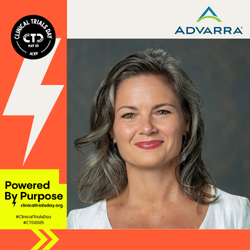Community engagement is a critical step in improving the diversity of clinical trial participants, but this demands more than simply setting up a site in an area with an underserved population. Sustainable growth in recruitment and retention requires ongoing engagement beyond efforts to recruit for a specific trial.
Seneca Harrison: “Street teams” support community outreach
Quality Clinical Research (QCR) has taken a unique approach to community engagement, setting up a “street team” at each of the company’s five U.S. locations. Two more locations will open in the first half of 2024, with a goal of 10 to 15 sites. “Members of these street teams all belong to minorities and live within the communities where their outreach is focused,” explains Seneca Harrison, Vice President of Operations and CEO at QCR, Inc. “Their main role is community outreach to build trust—including meeting community leaders and organizing events.” These include educational offerings such as lunch-and-learns and fun events such as the annual cornhole tournament held on a Native American reservation near the company’s headquarters in Omaha, Neb.
“As far as we’re aware, nobody else has this type of community engagement program on this scale, with diversity at the forefront of recruitment,” states Harrison.
To track the success of QCR’s street teams, each team member has a unique QR code. “All the promotional merchandise distributed at our events carries this code, enabling us to track any study recruitment that originates there,” says Harrison. “Based on community members’ interactions with the QR code, we can track each individual from the moment of their first interaction through to screening and consenting. This gives a concrete measure of success compared to traditional outreach via social media, advertisements, and patient databases. The street teams currently bring in around 18% of all patients that reach the screening stage. Their outreach also increases the size of our patient database, as well as adding social media followers so that our ads reach a broader audience.”
Harrison notes that, “For research to be successful, we have to engage with as many subpopulations as possible. We plan to continue to expand our outreach program to provide healthcare for underserved people while building trust and brand recognition. This is not cheap, but there is a big return on investment. I’m confident that this approach can help to advance diversity, inclusion, and the overall quality of clinical research.”
Christopher Romero: Challenges are not insurmountable
“I’m excited to see the extent of ongoing efforts to reach out to underrepresented communities,” says Christopher Romero, MD, PhD, FACP, DABOM, Medical Director of Headlands Research. “This takes forethought, a deliberate effort, and the investment of time and energy. The challenges are not insurmountable, and anyone involved in advancing biomedical discoveries can help.”
Romero states that “at Headlands, the value we’ve placed on inclusivity since our inception is manifest by our sites, such as those located in underrepresented communities like south Texas. Workforce development is a central pillar to improving diversity in trial participants. We have worked hard to increase awareness of clinical research as a career path, providing opportunities for talented individuals within communities around our sites, who historically may have had to move to larger metropolitan areas for career development.” Headlands has partnered with various local entities on workforce training and development, including projects supported by the Texas Workforce Commission.
“Having a workforce that can represent and empathize with our communities helps builds trust and collaboration in a way that is otherwise challenging to achieve,” asserts Romero. “By bringing trial opportunities to under-represented communities in therapeutic areas such as cardiovascular and neuroscience, we are able to increase diverse participation which improves the scientific validity and broader applicability of trial results. We aim to truly be of service to our communities in multiple ways extending even beyond providing access to research. This builds the trust needed to make significant long-term changes and enable us to have conversations that demystify clinical research.”
Some sponsors are developing new resources that sites can draw on for community outreach. “I would encourage this as a way to help sites build the fundamental infrastructure that is needed to improve clinical trial diversity,” says Romero.
“As we reach out to underserved communities, we must take account of the reality of the time and effort required for trial participation,” concludes Romero. “We need to be cognizant of the true costs and burdens for our participants to volunteer in these studies. As an industry, we should contemplate the impacts of adverse events for uninsured individuals who may require follow-up care. This is one of the many layers of complexity involved in supporting these participants. Other potential barriers include transportation, childcare, and translation services. Creative approaches are needed to fully understand and meet these needs.”
Heidi Green: Peer researchers help improve ethnicity data gathering
“Meaningful community engagement is embedded in all the work we do,” says Heidi Green, PhD, Director of Health Research Equity at COUCH Health. As a global creative health engagement agency headquartered in Manchester, United Kingdom, COUCH works with sites in areas with diverse populations.
“Open and engaged conversations between site staff and community members helps both recruitment and retention,” Green points out. “We facilitate these exchanges by working with charitable community organizations such as patient support groups, building trust and learning about patient perspectives. For example, working with people able to get pregnant can help us understand their needs and preferences around contraception.”
So often, judgements are made around how certain cultures may think or feel around topics deemed taboo, Green adds. “We have found a real hunger for education on these topics,” she says, “and while some taboo may remain, this is typically outweighed by a desire for information to inform decision-making. We have been able to take these factors into account when designing research programs—both our own and those led by sponsors.”
To help with a project designed to improve ethnicity data collection, COUCH established a group of peer researchers who live within diverse communities. “By training these individuals—who were well placed to get accurate and open findings from their community—we were able to understand how to make this data collection process more inclusive and comfortable for study participants,” Green says. “Ethnically diverse communities gave feedback that, for a trial to be robust and inclusive, [community members] should be meaningfully involved from an early stage; these populations also said they were not always sure why ethnicity data had been collected in trials they knew about.”{1}
Ashley Moultrie: We must prove ourselves to be trusted community partners
“We need to make a true transition from community outreach to community engagement,” says Ashley Moultrie, CCRP, Director of DEI and Community Engagement at Javara. “Otherwise, we’ll just be spinning our wheels. To serve patients, we must participate in community building, learn about our potential trial participants’ needs and wishes, and meet them where they are while doing so. Before going in with an ‘ask,’ we need honest communications about their experiences in healthcare and clinical research. It’s not enough to show up and ask for study participants—we must first prove ourselves to be trusted community partners.”
Moultrie notes, “We already have good models for community engagement. These include connecting with community leaders who have [their fingers on the pulse of] needs and areas of opportunity, and are already advocating for and building community and connections. Looking into the social determinants of health most prevalent in each community can help support people who have been marginalized. Health-related events are a great place to start, but they aren’t the only answer. We can offer support through career fairs, back-to-school drives, and mentorships. Opportunities for engagement are plentiful.”
Reference
Edited by Jill Dawson




